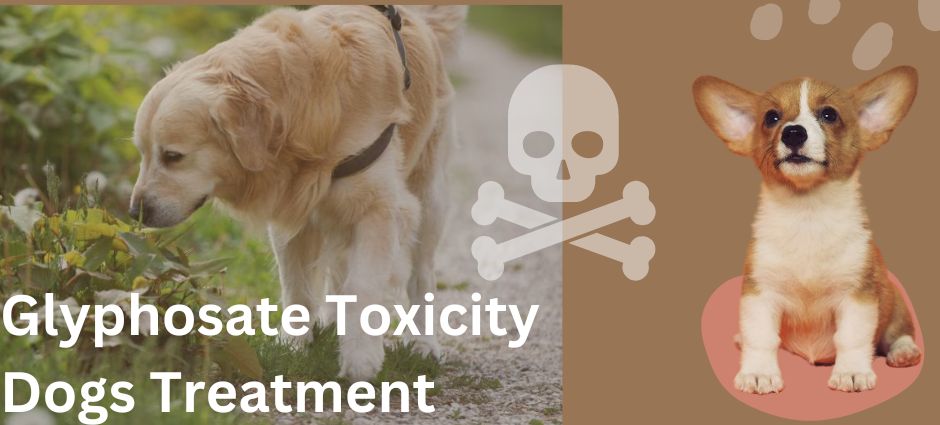Your dog is your best friend, your furry companion, your family. So when they come bounding in from the backyard, lethargic and showing concerning symptoms, it’s natural to worry.
If you suspect they may have come into contact with glyphosate, a common herbicide found in weed killers, understanding the potential glyphosate toxicity dogs treatment options is crucial.
What is Glyphosate Toxicity Dogs Treatment and How Can Dogs Be Exposed?
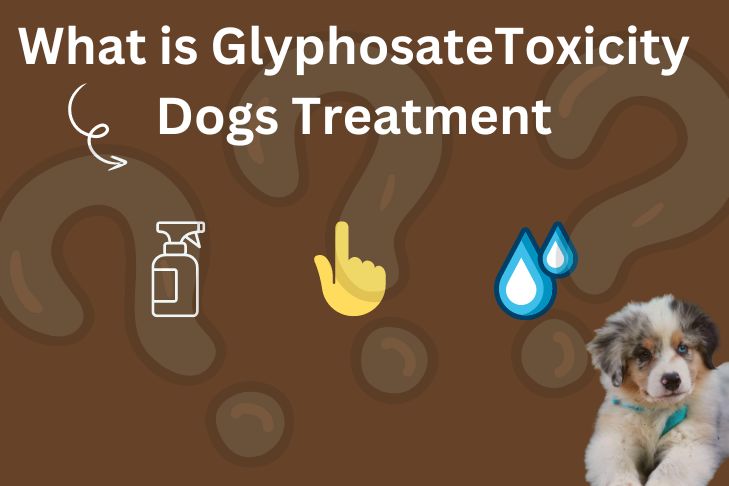
Glyphosate is a broad-spectrum herbicide used in various weed-killing products, both commercially and for home use. While generally considered safe when used as directed, accidental exposure can occur in dogs. Here are some common ways:
- Ingesting Sprayed Plants: If your chunky dog ingests grass or other plants recently treated with glyphosate before it dries completely, they can become poisoned.
- Drinking Contaminated Water: Glyphosate can run off into bodies of water after heavy rain, posing a risk for dogs who drink from puddles or untreated sources.
- Skin Contact: While less common, prolonged skin contact with concentrated glyphosate solutions can irritate a dog’s skin.
Also, learn about vasculitis dog ear here
Signs of Glyphosate Toxicity in Dogs:
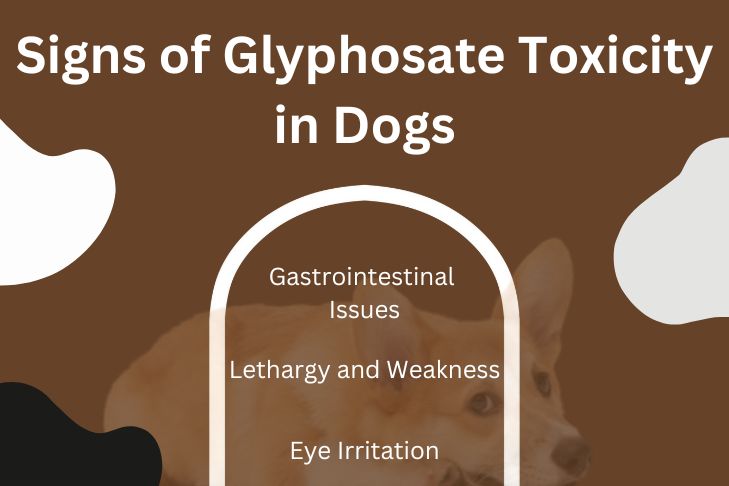
The severity of symptoms depends on the amount of glyphosate ingested and the individual dog. Here are some common signs to watch for in your giant fluffy dog:
- Gastrointestinal Issues: Vomiting, diarrhea, loss of appetite, and excessive thirst are some of the initial signs of glyphosate toxicity in dogs.
- Lethargy and Weakness: Your dog may become lethargic and display a lack of energy, indicating potential discomfort or illness.
- Eye Irritation: If the glyphosate comes into contact with your dog’s eyes, they might experience redness, squinting, or excessive tearing.
- Difficulty Breathing: In severe cases, glyphosate poisoning can lead to respiratory problems and difficulty breathing.
Immediate Action if You Suspect Glyphosate Toxicity Dogs: Treatment
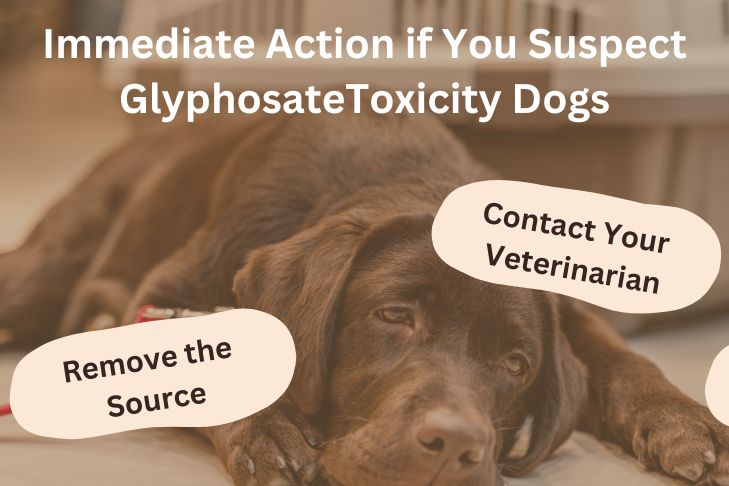
If you suspect your gray and white dog has ingested glyphosate, don’t wait for symptoms to appear. Here’s what to do immediately:
- Remove the Source: Keep your dog away from any potential source of further exposure, like treated plants or contaminated water.
- Contact Your Veterinarian Immediately: Explain the situation and your suspicions to your veterinarian. They will guide you on whether to bring your dog in right away or wait for further instructions.
- Do Not Induce Vomiting at Home: Unless specifically instructed by your vet, do not attempt to induce vomiting at home. It’s crucial to leave the treatment decisions to a qualified professional.
Treatment Options for Glyphosate Poisoning in Dogs:
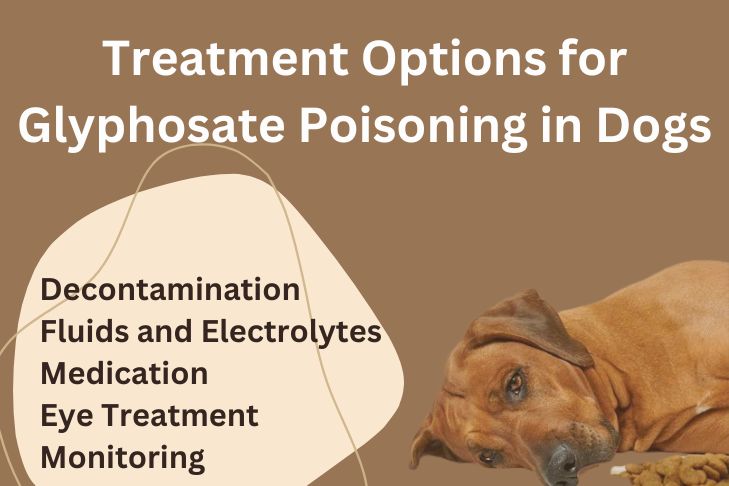
At the vet, treatment for glyphosate poisoning will depend on the severity of your white dogs’ symptoms and the time of exposure. Here’s what you can expect:
- Decontamination: If your dog recently ingested glyphosate, the vet might induce vomiting with medication to remove any unabsorbed poison.
- Fluids and Electrolytes: Intravenous fluids might be administered to address dehydration caused by vomiting and diarrhea.
- Medication: Anti-nausea medication can help manage vomiting, and medications like activated charcoal can help absorb any remaining toxin in the stomach.
- Eye Treatment: If your dog’s eyes were affected, the vet will provide eye flushing and soothing medications.
- Monitoring: Your dog will likely be monitored for several hours to ensure their condition doesn’t worsen. If things go too south, you might have to consider hospitalization.
Preventing Glyphosate Toxicity Dogs with Treatment:
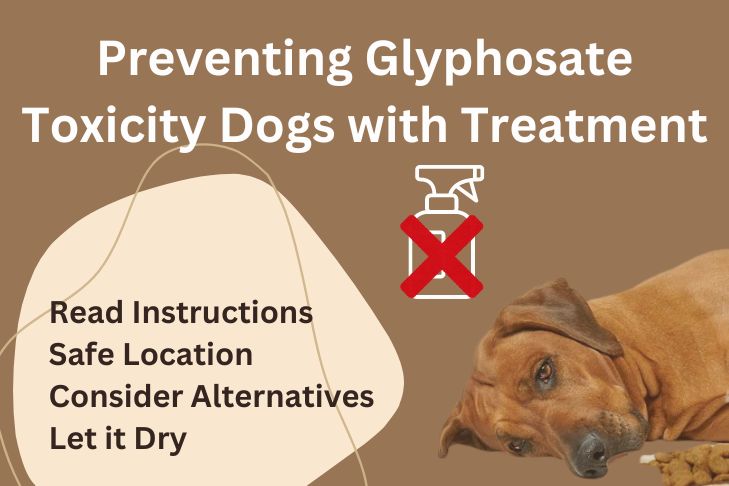
The best treatment is always prevention. Here are some ways to keep your furry little dog safe from glyphosate poisoning:
- Read and Follow Label Instructions: Always follow the application instructions on glyphosate-based weed killers meticulously.
- Keep Products Out of Reach: Store herbicides in a safe location, locked away from curious paws and inquisitive noses.
- Allow Thorough Drying: Make sure you are restricting your dog’s access to treated areas until the wound is all dried. Refer to the label for recommended wait times.
- Consider Alternatives: Explore safer weed control options that are less toxic to pets and the environment.
- Let it Dry Completely: Don’t let your dog roam treated areas until the herbicide has fully dried. Refer to the label for recommended wait times.
- Explore Safer Options: Consider alternative weed control methods that are less toxic to both pets and the environment.
Check blog: Understanding Tracheobronchitis in Dogs: When Your Pup’s Cough Gets Ruff
Prognosis for Glyphosate Poisoning in Dogs:
The good news is that with prompt veterinary attention, most cases of glyphosate poisoning in dogs have a good prognosis. Early checkups and treatment have higher chances of full recovery for your fluffy dog.
Living a Healthy Life with Your Dog after Glyphosate Toxicity Dogs Treatment:
By being vigilant and taking preventive measures, you can minimize the risk of your dog coming into contact with glyphosate. If you suspect exposure, immediate action and a trip to the vet can make all the difference. Always remember, no medicine can treat your chunky dog better than your love and care.



